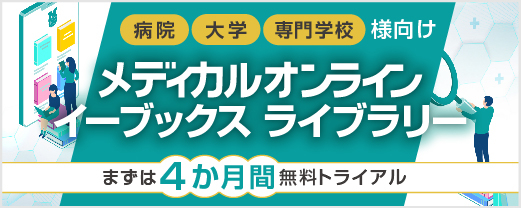アブストラクト
| Title | 深部感覚障害に対する理学療法アプローチ |
|---|---|
| Subtitle | 特集 感覚障害に対する理学療法アプローチ |
| Authors | 山本吉則*, 百崎良** |
| Authors (kana) | |
| Organization | *三重大学医学部附属病院リハビリテーション部, **三重大学大学院医学系研究科リハビリテーション医学分野 |
| Journal | 理学療法 |
| Volume | 39 |
| Number | 10 |
| Page | 894-901 |
| Year/Month | 2022 / 10 |
| Article | 報告 |
| Publisher | メディカルプレス |
| Abstract | 1. 深部感覚は筋や腱, 関節などにある受容器から生じる感覚であり, 手足の位置や関節の曲がり具合を把握することに貢献している. 2. 深部感覚が障害されると, 姿勢や運動の精度, 力のコントロールなどが難しくなる. 3. 深部感覚の検査では, 一般的な検査に加えて, ロボットや体性感覚誘発電位装置による信頼性の高い取り組みがなされている. 4. 理学療法では, 感覚モダリティの特性を考慮し, 最新のリハビリテーション機器を活用することで, 深部感覚障害への最適なアプローチにつながる. |
| Practice | 医療技術 |
| Keywords |
- 全文ダウンロード: 従量制、基本料金制の方共に1,360円(税込) です。
参考文献
- 1) Sherrington CS : The Integrative Action of the Nervous System(2nd ed), pp132-133. Alpha Edition, New York, 2020
- 2) Schmidt RA : 運動学習とパフォーマンス(調枝孝治監訳), pp47-64. 大修館書店, 1994
- 3) Schmidt RF : コンパクト生理学(佐藤昭夫監訳), p79. 医学書院, 1997
- 4) Duus P : 神経局在診断-その解剖, 生理, 臨床 第3版(半田肇監訳), p330. 文光堂, 1988
- 5) Hunter SM, Crome P : Hand function and stroke. Rev Clin Gerontol 12(1) : 66-81, 2002
残りの41件を表示する
- 6) Robertson SL, Jones LA : Tactile sensory im-pairments and prehensile function in subjects with left-hemisphere cerebral lesions. Arch Phys Med Rehabil 75(10) : 1108-1117, 1994
- 7) Aruin AS : Support-specific modulation of grip force in individuals with hemiparesis. Arch Phys Med Rehabil 86(4) : 768-775, 2005
- 8) Blennerhassett JM et al : Impaired discrimi-nation of surface friction contributes to pinch grip deficit after stroke. Neurorehabil Neural Repair 21(3) : 263-272, 2007
- 9) Carey LM : Somatosensory loss after stroke. Crit Rev Phys Rehabil Med 7(1) : 51-91, 1995
- 10) Nowak DA et al : Dexterity is impaired at both hands following unilateral subcortical middle cerebral artery stroke. Eur J Neurosci 25(10) : 3173-3184, 2007
- 11) Welmer AK et al : Limited fine hand use af-ter stroke and its association with other disa-bilities. J Rehabil Med 40(8) : 603-608, 2008
- 12) Lin SI : Motor function and joint position sense in relation to gait performance in chron-ic stroke patients. Arch Phys Med Rehabil 86(2) : 197-203, 2005
- 13) Lee MJ et al : Movement detection at the an-kle following stroke is poor. Aust J Physiother 51(1) : 19-24, 2005
- 14) Hsu AL et al : Analysis of impairments influ-encing gait velocity and asymmetry of hemi-plegic patients after mild to moderate stroke. Arch Phys Med Rehabil 84(8) : 1185-1193, 2003
- 15) Rand D et al : Recovery of patients with a combined motor and proprioception deficit during the first six weeks of post stroke reha-bilitation. Phys Occup Ther Geriatr 18(3) : 69-87, 2001
- 16) Acerra NE : Sensorimotor Dysfunction in CRPS1 and Stroke : Characterisation, Predic-tion and Intervention. Doctor of Philosophy Degree Thesis. University of Queensland, 2007
- 17) Tyson SF et al : Sensory loss in hospital-ad-mitted people with stroke : characteristics, as-sociated factors, and relationship with func-tion. Neurorehabil Neural Repair 22(2) : 166-172, 2008
- 18) Bernard-Espina J et al : Multisensory integra-tion in stroke patients : A theoretical ap-proach to reinterpret upper-limb propriocep-tive deficits and visual compensation. Front Neurosci 15 : 646698, 2021
- 19) 才藤栄一・他 : 脳血管障害患者における体性感覚誘発電位-感覚障害・運動麻痺との関係. リハ医学 26(3) : 141-148, 1989
- 20) 辻内和人 : 脳血管障害患者の下肢感覚機能と体性感覚誘発電位に関する研究. リハ医学 37(5) : 274-281, 2000
- 21) Wolpert DM et al : An internal model for sen-sorimotor integration. Science 269(5232) : 1880-1882, 1995
- 22) Frey SH et al : Neurological principles and re-habilitation of action disorders : computation, anatomy, and physiology(CAP) model. Neu-rorehabil Neural Repair 25(5) : 6S-20S, 2011
- 23) Starr A, Cohen LG : 'Gating' of somatosenso-ry evoked potentials begins before the onset of voluntary movement in man. Brain Res 348(1) : 183-186, 1985
- 24) Giblin DR : Somatosensory evoked potentials in healthy subjects and in patients with le-sions of the nervous system. Ann N Y Acad Sci 112(1) : 93-142, 1964
- 25) Jones SJ et al : Centrifugal and centripetal mechanisms involved in the 'gating' of corti-cal SEPs during movement. Electroencephalogr Clin Neurophysiol 74(1) : 36-45, 1989
- 26) Paillard J, Brouchon M : A proprioceptive contribution to the spatial encoding of position cues for ballistic movements. Brain Res 71(2-3) : 273-284, 1974
- 27) Knecht S et al : Facilitation of somatosensory evoked potentials by exploratory finger move-ments. Exp Brain Res 95(2) : 330-338, 1993
- 28) 鈴木俊明・他 : 正常動作の神経機構. 関西理学 2 : 1-9, 2002
- 29) 山本吉則 : 運動頻度の違いが体性感覚機能に及ぼす影響について-短潜時体性感覚誘発電位を用いた検討. 関西医療大学大学院修士論文集, pp169-193. 2013
- 30) Krakauer JW et al : Independent learning of internal models for kinematic and dynamic control of reaching. Nat Neurosci 2(11) : 1026-1031, 1999
- 31) Todorov E, Jordan MI : Optimal feedback control as a theory of motor coordination. Nat Neurosci 5(11) : 1226-1235, 2002
- 32) Scott SH : Optimal feedback control and the neural basis of volitional motor control. Nat Rev Neurosci 5(7) : 532-546, 2004
- 33) Diedrichsen J et al : The coordination of movement : optimal feedback control and be-yond. Trends Cogn Sci 14(1) : 31-39, 2010
- 34) Vidoni ED, Boyd LA : Motor sequence learn-ing occurs despite disrupted visual and prop-rioceptive feedback. Behav Brain Funct 4 : 32, 2008
- 35) Bonan IV et al : Reliance on visual informa-tion after stroke. Part II : Effectiveness of a balance rehabilitation program with visual cue deprivation after stroke : A randomized controlled trial. Arch Phys Med Rehabil 85(2) : 274-278, 2004
- 36) Seo NJ et al : Use of visual force feedback to improve digit force direction during pinch grip in persons with stroke : a pilot study. Arch Phys Med Rehabil 92(1) : 24-30, 2011
- 37) Quaney BM et al : Visuomotor training im-proves stroke-related ipsilesional upper ex-tremity impairments. Neurorehabil Neural Re-pair 24(1) : 52-61, 2010
- 38) Kurillo G et al : Grip force tracking system for assessment and rehabilitation of hand function. Technol Health Care 13(3) : 137-149, 2005
- 39) Stein BE ed : The New Handbook of Multi-sensory Processing. MIT Press, Cambridge, 2012
- 40) Findlater SE, Dukelow SP : Upper extremity proprioception after stroke : bridging the gap between neuroscience and rehabilitation. J Mot Behav 49(1) : 27-34, 2017
- 41) Gurari N et al : Individuals with chronic hemiparetic stroke can correctly match fore-arm positions within a single arm. Clin Neuro-physiol 128(1) : 18-30, 2017
- 42) Ingemanson ML et al : Neural correlates of passive position finger sense after stroke. Neurorehabil Neural Repair 33(9) : 740-750, 2019
- 43) Rinderknecht MD et al : Reliability, validity, and clinical feasibility of a rapid and objective assessment of post-stroke deficits in hand pro-prioception. J Neuroeng Rehabil 15(1) : 47, 2018
- 44) Deblock-Bellamy A et al : Quantification of upper limb position sense using an exoskele-ton and a virtual reality display. J Neuroeng Rehabil 15(1) : 24, 2018
- 45) Semrau JA et al : Inter-rater reliability of ki-nesthetic measurements with the KINARM robotic exoskeleton. J Neuroeng Rehabil 14(1) : 42, 2017
- 46) De Santis D et al : Robot-assisted training of the kinesthetic sense : enhancing propriocep-tion after stroke. Front Hum Neurosci 8 : 1037, 2015


